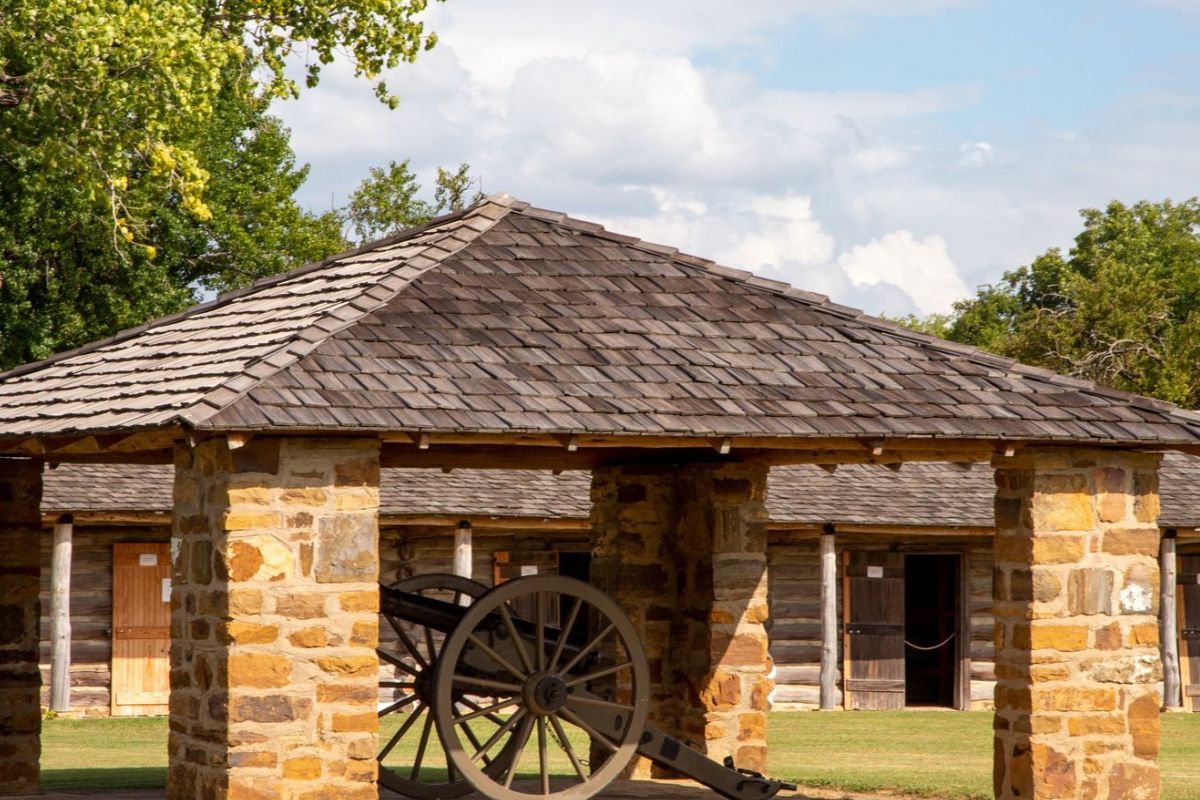Hidden Frontier Forts Of Oklahoma’s Fort Gibson

Have you ever wondered about the hidden stories behind Fort Gibson in Oklahoma? This historic site, established in 1824, played a crucial role in the American frontier. Located near the confluence of the Arkansas, Grand, and Verdigris rivers, Fort Gibson served as a military outpost during the Indian Removal Act and the Civil War. Today, it stands as a testament to the resilience and history of the region. Visitors can explore reconstructed buildings, walk through the old barracks, and even see artifacts from the 19th century. Whether you're a history buff or just curious, Fort Gibson offers a unique glimpse into America's past.
Hidden Frontier Forts of Oklahoma's Fort Gibson
Oklahoma's Fort Gibson holds a treasure trove of history. This area, rich with stories of the past, offers a glimpse into the lives of those who once protected the frontier. Let's explore some hidden frontier forts that you might not know about.
Fort Gibson: The Heart of Frontier Defense
Fort Gibson served as a key military post in the 19th century. It played a crucial role in the Indian Territory and the westward expansion of the United States. Here are some lesser-known forts connected to Fort Gibson.
Fort Towson
Fort Washita
- Built in 1842, Fort Washita is situated near Durant, Oklahoma. It was intended to protect the Chickasaw and Choctaw tribes from Plains Indian raids. The fort later became a Confederate stronghold during the Civil War.
Fort Coffee
- Established in 1834, Fort Coffee is located near the Arkansas River. It was initially a military post but later transformed into a school for Choctaw boys. The fort's ruins still tell tales of its diverse history.
Lesser-Known Forts with Unique Stories
Beyond the well-known forts, several smaller posts played significant roles in the region's history. These forts, though less famous, offer unique insights into frontier life.
Fort Arbuckle
- Fort Arbuckle, founded in 1851, was located in south-central Oklahoma. It aimed to protect settlers from Native American tribes. The fort's strategic position made it a vital outpost during its time.
Fort Cobb
- Established in 1859, Fort Cobb is situated in western Oklahoma. It served as a refuge for displaced Native American tribes. The fort also played a role in the Indian Wars, providing protection and supplies.
Fort Reno
- Built in 1874, Fort Reno is located near El Reno, Oklahoma. It was established to control the Cheyenne and Arapaho tribes. The fort later became a remount station for the U.S. Army during World War II.
Forts with Civil War Significance
Several forts in Oklahoma played pivotal roles during the Civil War. These forts witnessed significant battles and troop movements, shaping the course of the conflict.
Fort McCulloch
- Fort McCulloch, established in 1862, is located near the Blue River. It served as a Confederate fortification during the Civil War. The fort's strategic location made it a key defensive position.
Fort Gibson (Revisited)
- Fort Gibson itself saw significant action during the Civil War. It was occupied by both Union and Confederate forces at different times. The fort's strategic importance made it a focal point of military activity.
Forts with Native American Connections
Many forts in Oklahoma have deep connections to Native American history. These forts played roles in both protecting and displacing Native American tribes.
Fort Sill
- Established in 1869, Fort Sill is located near Lawton, Oklahoma. It was built to control the Comanche, Kiowa, and Apache tribes. The fort remains an active military installation today.
Fort Supply
- Built in 1868, Fort Supply is situated in northwestern Oklahoma. It served as a supply base for military campaigns against the Plains tribes. The fort's history is closely tied to the Indian Wars.
Oklahoma's Fort Gibson and its connected forts offer a fascinating glimpse into the past. Each fort has its unique story, contributing to the rich tapestry of frontier history.
Discovering Fort Gibson's Rich History
Fort Gibson offers a unique glimpse into Oklahoma's past. Visiting this historic site, you can explore the frontier forts that played a crucial role in American history. Walking through the fort's grounds, you feel the presence of those who lived and worked there. The museum exhibits provide detailed insights into the lives of soldiers and settlers.
Guided tours enhance your understanding of the fort's significance. The reconstructed buildings and artifacts make history come alive. Fort Gibson is not just a place to learn; it's a place to experience.
Whether you're a history buff or just curious, Fort Gibson's rich history is worth exploring. Plan your visit and step back in time to discover the stories that shaped Oklahoma.

